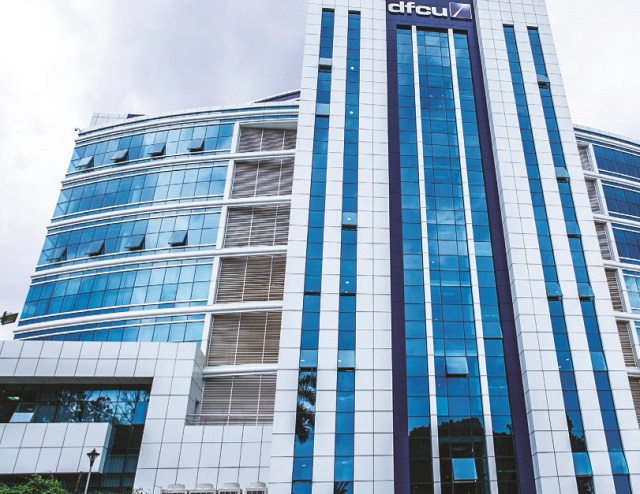
The banking industry projects to record drop in net profits
Kampala, Uganda | ISAAC KHISA and JULIUS BUSINGE | Dfcu’s net profit has more than quadrupled to Shs114.05bn during the six months ending June 30 compared to Shs23.3bn recorded last year following acquisition of part of Crane Bank assets in January.
The Bank’s income more than tripled from Shs 83.79bn in 2016 to Shs 255bn this year, with the operating expenses more than doubling from Shs48.07bn to Shs 91.44bn during the period under review.
Similarly, allowance for impairment of loans and advances more than doubled from Shs 5.28bn last year to Shs 11.89bn this year.
Juma Kisaame, the managing director of Dfcu Bank told Journalists on August 15 that the acquisitions of Crane Bank helped it grow its customer base by more than 50%, widen its network from 43 to 67 branches and increase its asset base from Shs1.8tn to Shs3.05tn.
“The transaction also enhanced skills base as a result of on boarding the transferred staff and enhanced brand visibility and market positioning,” he said.
He said the new acquisition, which placed Dfcu Bank among the top three banks in the industry, enabled it to firm on the path to transforming from a niche bank to universal bank.
The defunct Crane Bank fell into trouble last year when it registered Shs3billion loss in 2015, down from a Shs 50 billion profit in previous year due to high level of non-performing loans and subsequent decline in its core capital to below 50% per legal requirement under the law.
This prompted BoU to take over its management on October 20, 2016 to avoid what it termed as ‘systemic risk to the financial system and allow the lead investor Sudhir Ruparelia, who had 48.67 % shares to either inject in more capital in the financial institution within six months or the regulator looks for a new investor. But when the process to inject in more capital failed, BoU sold it to Dfcu.
This new development comes at the time the country’s banking industry, with the exception of Crane Bank, has recorded a 4 % drop in net profit during the first half of the year compared with 18% growth in the same period last year, according to Stanbic Bank Chief Executive Officer, Patrick Mweheire.
Stanbic Bank, the country’s largest commercial bank by assets, has already recorded a reduction in net profit from Shs107bn in 2016 to Shs 95bn bn this year, representing 11% drop citing reduction in private sector credit, lending rates and yields from the government securities.
This follows Bank of Uganda’s move to lower the Central Bank Rate (CBR) from 15% in June 2016 to 10% in June this year to stimulate economic activities.
In response, Stanbic lowered its lending rates from 24% to 18% during the same period under review, far below the market average rate that stands at approx. 22%. Yields from government securities has reduced from 18.6% last year compared to 14.7% at the moment.
Mweheire said the slow growth in profit is attributed to the hard macro-economic environment, which remains subdued but with signs of a rebound.
“Monetary policy has focused on stimulating growth however some key sectors (manufacturing; real estate; construction) are still posting negative credit growth year-on-year,” he said.
He said unutilized credit limits in the industry sector exceeded Shs 1.7tn as at the end of last June having moved from an average of 1.2tn last year. The industry client loans and advances growth has remained under 1% during the same period.
Going forward, Kisaame, said although the current macro-economic environment is challenging, they remain positive about the economic outlook whose prospects are underpinned by the implementation of significant infrastructure projects and renewed momentum in oil and gas sector.
The government is currently looking towards the development of a US$3.5bn crude oil export pipeline and a US$4bn oil refinery ahead of the oil production planned for 2020.
He said the bank plans to optimise synergies from the acquisition; leverage investment in technology to drive innovation and efficiency and diversify its deposit and loan portfolio mix to stir its growth in the coming years.
He added that the Bank also plans to implement a culture of change program to enhance staff productivity and professionalism, enhancing risk management to ensure sustainability as well as leverage on its brand equity and new market positioning.
****
 The Independent Uganda: You get the Truth we Pay the Price
The Independent Uganda: You get the Truth we Pay the Price



